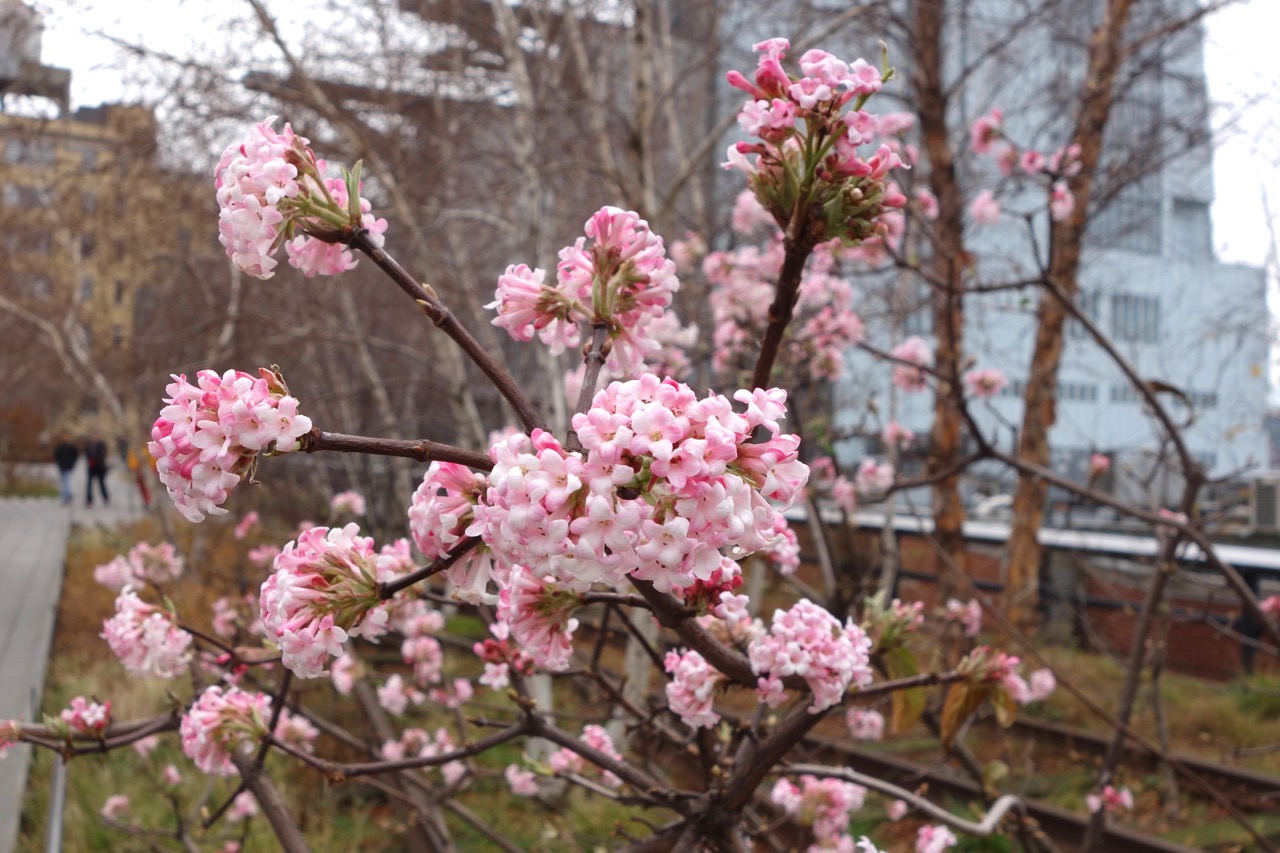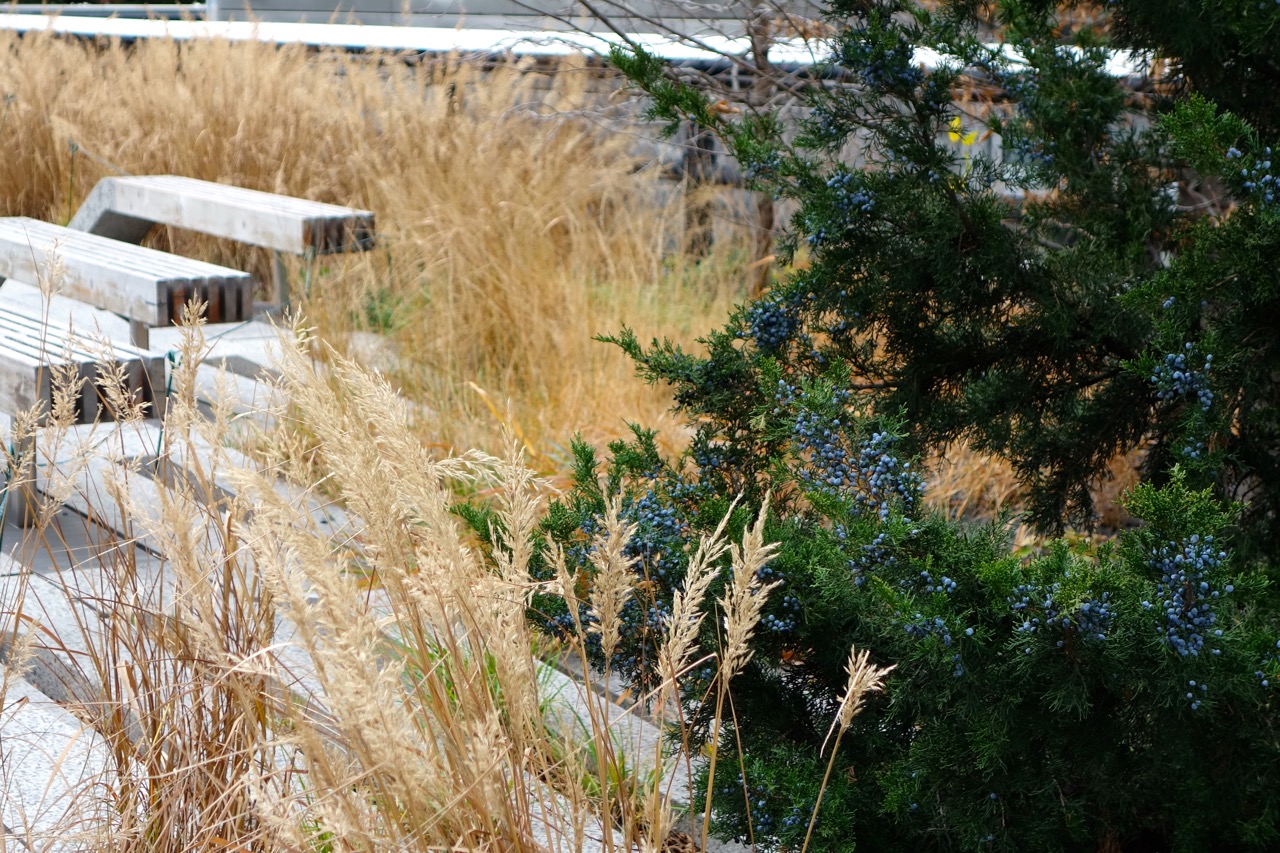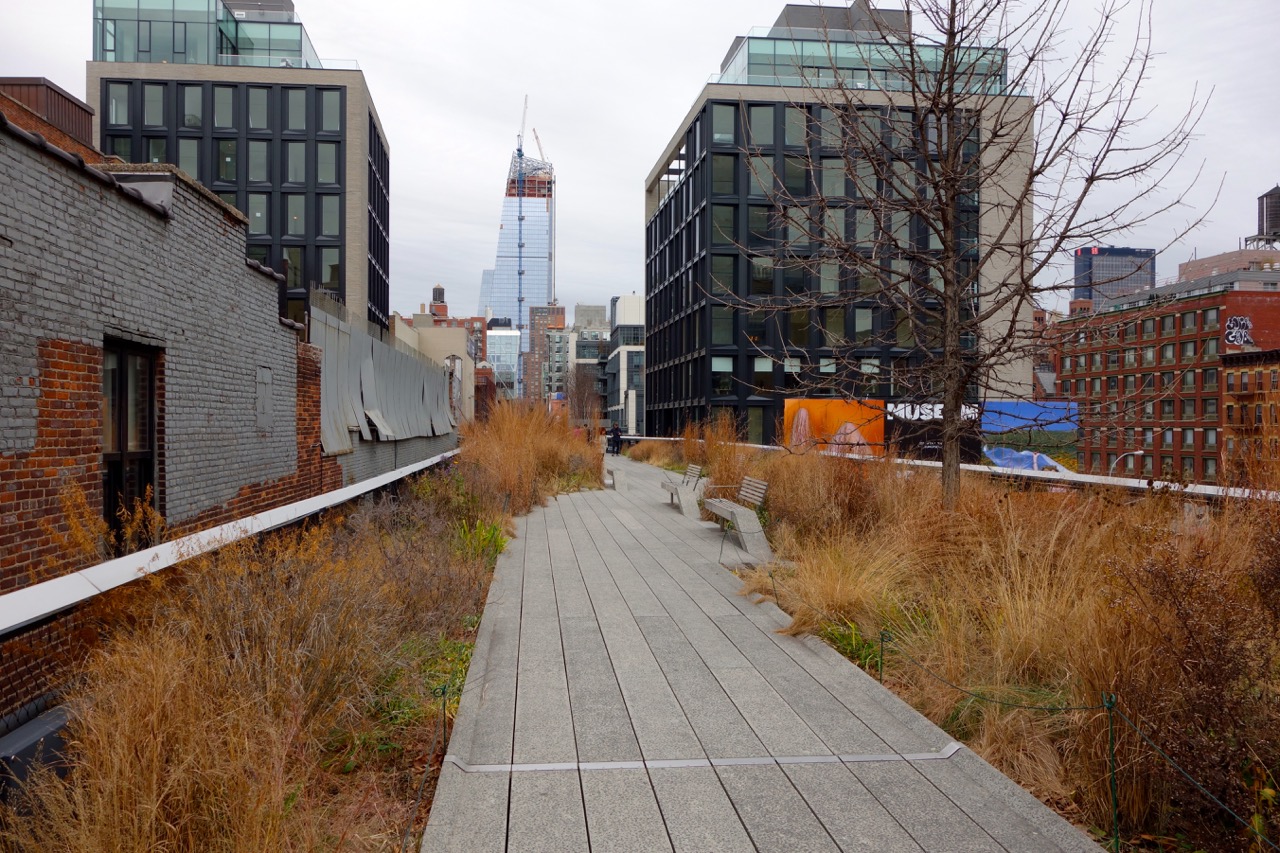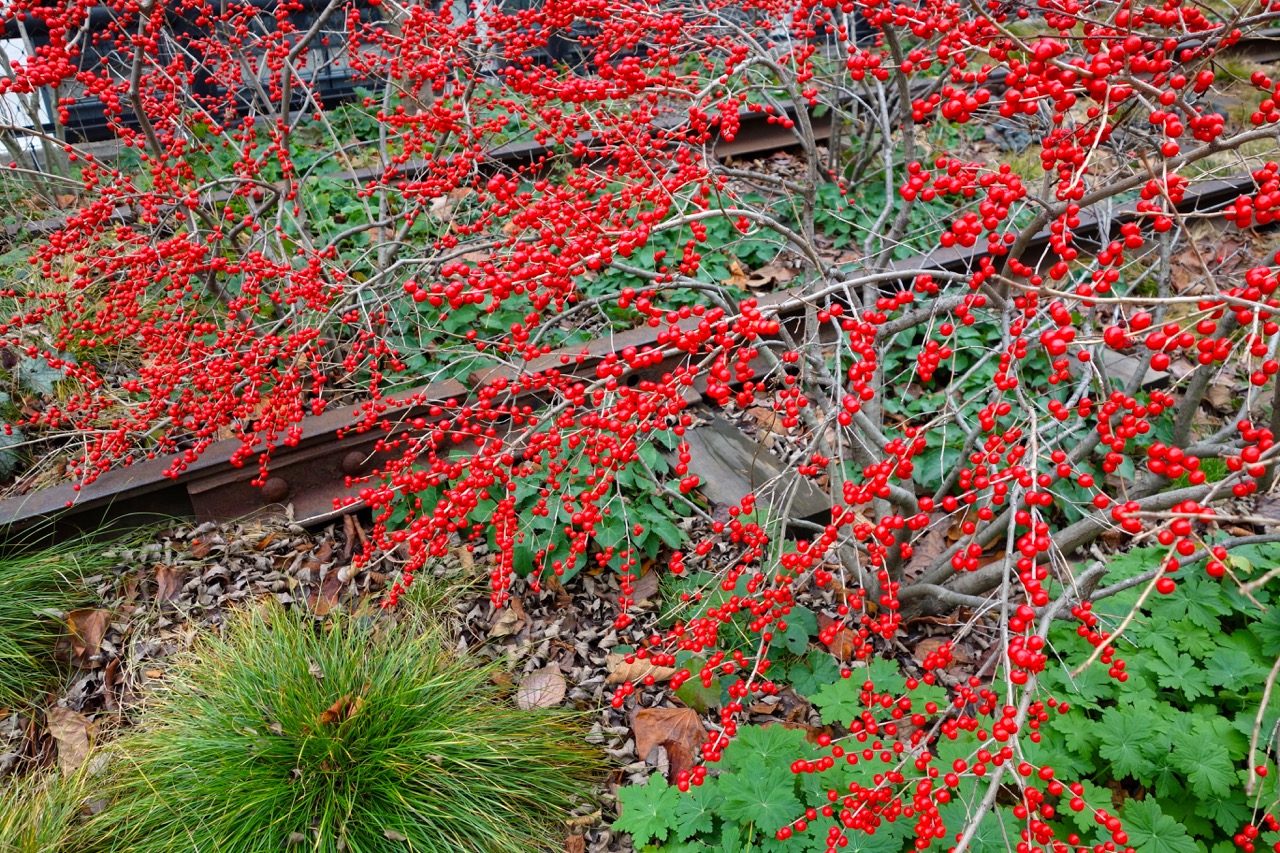Gardens are great ways to experience nature – beautiful plants, butterflies and birds. They restore our minds and souls; they lift our spirits. They connect us to history and culture. And while the High Line in New York City does all of this, it also reminded me that gardens are good business.
So much has been written about this recent garden – its first phase was completed in 2009 – and it is a joy to experience.
Photo from the 1870's of an elevated train that was one block from where the High Line was later built. Source: The New York Historical Society.
In some ways this landscape was never meant to be. Originally it was an elevated rail line built in the 1930’s to reduce accidents by getting trains off of the streets. It fell out of use when manufacturers left Manhattan, was considered an eyesore, and was scheduled for demolition for many years. “Weeds” continued to grow there, but gardening in an area exposed to the elements on all sides has real challenges.
In a neighborhood of auto repair shops, meat packers, taxi companies, and storage facilities, not many people gave the old elevated railway space much notice. But its gritty, light industrial, undesirable location actually saved it.
In a truly inspiring story, neighbors Joshua David and Robert Hammond formed a group called the Friends of the High Line. They lobbied the City of New York to turn this remnant of our industrial past into a park (and make some zoning changes).
Their proposal put the cost of the park at $260 million. In exchange they estimated that the new park would attract 400,000 visitors per year and generate $250 million in real estate taxes over 20 years.
Anyone who has visited this park can confirm that it is stunning: it has a different beauty in each season. While only 30 feet wide at some points, it provides 1.5 miles of plantings designed by Piet Oudolf using his signature pallet of native prairie plants, birch trees, and ferns. Old tracks and industrial elements are integrated into the design, giving us a sense of place. It provides unusual views of the Hudson River and the City from 30 feet above street level.
On my recent visit it was spring in winter. Our mild autumn meant that perennials were still blooming and some shrubs were even starting to flower!
But the reason I call this the billion $ garden is that the Friends of the High Line miscalculated in their proposal. Today the park attracts 4 million visitors each year, has generated $900 million in real estate tax income for the city, plus an additional $2 billion in economic activity.
Good gardens are good business!













